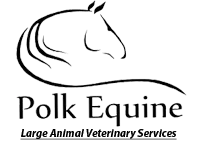What is Colic?
The term “colic” means only “pain in the abdomen” or “pain in the belly”. There are many causes for such pain, ranging from the mild and inconsequential to the life-threatening or fatal. One of the problems with equine colic is that it can be very difficult in the early stages to distinguish the mild from the potentially fatal. This is why all cases of abdominal pain should be taken seriously right from the onset.
Signs of Colic
The signs of colic in horses range from almost imperceptible in mild cases to extremely violent in severe cases. The following list includes the most common signs:
- lying down more than usual
- getting up and lying down repeatedly
- standing stretched out
- standing frequently as if to urinate
- turning the head towards the flank
- repeatedly curling the upper lip
- pawing the ground
- kicking at the abdomen
- rolling
What is Laminitis?
Laminae attach the bones of the hoof to the inner hoof wall. When laminitis strikes, blood supply is diminished to the laminae causing them to die off and loose their hold on the pedal (coffin) bone. Once that bond has begun to break down, the bone will begin to rotate down and fall through the sole of the hoof. Once rotation has begun, this is called Founder. Should the pedal bone fall through the sole, this is called Sinker. Laminitis is the disease, founder and sinker are what follows if the condition is not immediately and correctly treated. Unfortunately, in some cases, there is just no stopping it.
How often should you deworm your horse?
Your veterinarian should perform a fecal test two times a year to determine your horse’s parasite burden. Depending on if your horse is a high, moderate or low egg shedder the deworming intervals vary. Climate and environment may contribute to your horse’s deworming strategy. Some products are meant to be fed daily with your horse’s feed. If you live in an area with year round pasture, your deworming schedule will be different from horse owners whose pastures are beneath the snow for several months of the year.
How are West Nile Virus and Eastern Equine Encephalitis (EEE) transmitted?
Birds carrying West Nile Virus or Eastern Encephalitis are bitten by mosquitoes which then transfer the virus to horses, other birds and other mammals including humans. Birds in the crow and jay family are thought to be the most common carriers, although some other species including waterfowl may be carriers as well. WNV/EEE is not transferred from horse to horse or horse to human.What is Equine Gastric Ulcer Syndrome (EGUS)?
Signs of gastric ulcers in horses
In foals, signs of gastric ulcers include:
- Intermittent colic, often after nursing or eating
- Poor appetite and nursing for only very short periods
- Teeth grinding
- Excessive salivation
- Diarrhea
- Lying on the back
- Intestinal perforation or adhesions
In adult horses, signs of gastric ulcers include:
- Poor performance
- Poor appetite
- Weight loss and poor body condition
- Poor hair coat
- Mild colic
- Mental dullness or attitude changes
- Lying down more than normal

